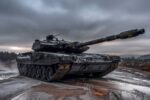The notion of maneuver awakens deep reflection on the actions and strategies implemented in various areas. Whether military operations, nautical maneuvers, or even daily actions in a work environment, each maneuver involves a series of decisions and of collaborations to achieve a specific objective. It is fascinating to explore how this action, whether collective or individual, reflects a expertise and one coordination essential for navigating complex and often unpredictable environments. The nuances of the maneuver thus reveal the importance of constant adaptation to the challenges that arise.
The term maneuver finds its origin in the verb maneuver, which means carrying out a precise or articulated action. In a general context, a maneuver refers to an operation that requires interaction with a device, mechanism or machine. This can apply to several fields, whether in aeronautics, maritime navigation or even medicine, where each sector has its own interpretation of this notion.
In a more technical sense, we can speak of maneuvering a weapon, which involves specific actions for the use or maintenance of military equipment. This includes gestures made by soldiers to load, unload or calibrate weapons. Each maneuver requires meticulous coordination in order to achieve the set objective in an often demanding and high-risk context.
The notion of maneuver also extends to the maritime domain. For example, in sailing, a maneuver may refer to the adjustment of ropes, sails or rudder in order to control the movement of a boat. This requires specific training and know-how that allows navigators to adapt to changing natural conditions.
In the world of work, the term is often used to refer to workers, called maneuvers, who perform manual or unskilled tasks. These workers play a crucial role on construction sites and factories, where coordination of resources is essential to achieve defined production objectives. With the complexity of industrial processes, these laborers must often acquire varied skills to be effective.
In medicine, the word maneuver takes on a different dimension. It refers to specific actions performed on a patient as part of a clinical examination. These actions are performed to cause or detect symptoms, allowing healthcare professionals to make a diagnosis. The precision and delicacy of medical maneuvers are therefore crucial for the safety and well-being of patients.
It is interesting to note that the maneuver is not limited only to physical action. In the psychological field, it can also designate techniques of mental manipulation, where one person seeks to influence the behavior or decisions of another. This type of maneuver is often destined to provoke specific reactions and can have serious consequences on interpersonal relationships.
Finally, the maneuver often involves some form of strategy. In the context of military operations, for example, coordination of maneuvers within units is essential to maximize efficiency and safety during missions. NATO, like other alliances, regularly implements exercises to test and strengthen these skills, ensuring a rapid response to potential threats in different geographic areas, such as the organization’s eastern flank.
The complexity and dynamism inherent in the notion of maneuver make it a multidimensional term, which covers numerous fields of action. Whether through precise gestures, strategic actions or psychological manipulation, understanding maneuver is fundamental to navigating the complex world of aeronautics, the military and beyond.


























